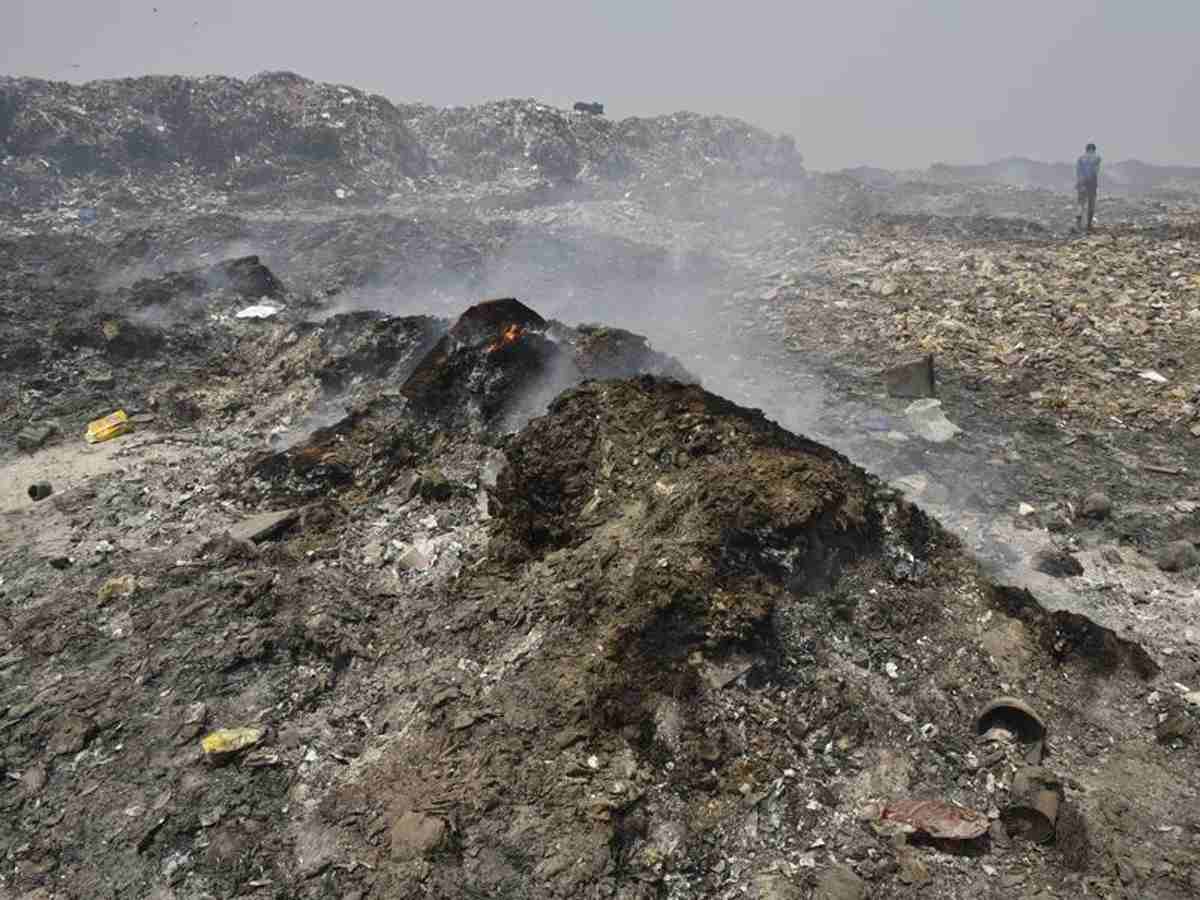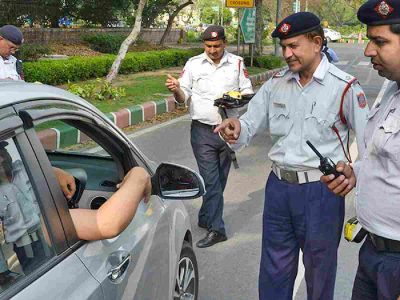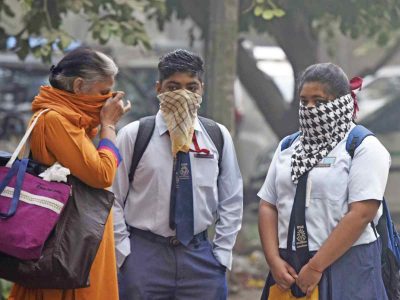In the shadow of North West Delhi’s industrial expanse, where factories buzz and smokestacks loom, a storm of public anger is brewing. The Municipal Corporation of Delhi (MCD) has approved the construction of a new Waste-to-Energy (WtE) plant in Narela, aimed at tackling the Capital’s growing garbage crisis by processing 3,000 tonnes of untreated waste daily. But for thousands of residents across 17 villages in the area, the project symbolises not progress, but betrayal.
Set to rise across 15 acres in Bawana—already home to power plants, manufacturing units, and a hazardous waste facility—the Narela-Bawana WtE plant promises to process 3,000 tonnes of waste daily. Residents, however, say they have borne the brunt of Delhi’s unchecked urbanisation for too long, and this latest decision may push their fragile ecosystem past the brink.
Ravi Kumar, 42, a resident of Bawana, said the community had been struggling to breathe for years due to the toxic fumes from the nearby landfill. Despite repeated complaints, he said, the authorities had done little to address the crisis.
“Now they want to set up a waste-to-energy plant right in our backyard? This is an outright attack on our right to live a healthy life,” he said, accusing officials of treating Bawana like a dumping ground. If the plant were truly safe, he argued, it would be built near the homes of politicians. “We won’t let them poison us anymore,” he added.
Kumar’s frustration is echoed across neighbourhoods that already live with the stench of garbage and the haze of pollutants. Residents cite chronic health issues, failing businesses, and neglected civic amenities as proof that the area has been reduced to what one resident called “Delhi’s environmental sacrifice zone.”
‘Enough is enough’
Sunita Sharma, 38, who lives with her family near the existing landfill site, painted a grim picture of daily life in Bawana. She said her children woke up coughing every morning, and the stench of rotting garbage made it nearly impossible to open windows or step outside without feeling sick.
“The Delhi government is supposed to protect its people, not put their health at further risk,” she said, adding that just because they weren’t wealthy didn’t mean they should be forced to live in such inhumane conditions.
For small business owners like Shankar Yadav, 45, the proposed incineration plant could be the final blow to already struggling local commerce. He said that running a business in Bawana had become a nightmare, with few customers willing to come to an area filled with toxic air and filth.
“This Waste-to-Energy plant will not only worsen air pollution but also drive people away from this area, killing businesses like mine,” he said. Despite protests and petitions, Yadav felt that the authorities continued to ignore residents’ voices. “How can we trust a system that prioritises profits over the health of its citizens?” he asked.
A community left behind
The resentment in Bawana cuts across generations. Kiran Devi, 60, who has lived in the area for over three decades, described the project as the latest chapter in a long history of neglect. Over the years, she said, the locality had turned into a “toxic wasteland,” with the landfill causing widespread suffering—skin allergies, respiratory problems, and more.
“Now this plant will release even more harmful emissions,” she said, dismissing official claims of safety. “We have suffered enough. If they care so much about waste management, let them build these plants near their own homes.”
Among the younger generation, the decision has sparked frustration and despair. Mohit Verma, 22, a college student, said he felt hopeless thinking about the future of his community. Like many others, he dreamed of a better life but questioned how that was possible when even basic health was under threat.
“We demand clean air and better living conditions, not more pollution,” he said, warning that continued government inaction would leave residents with no choice but to intensify their protests.
The anger is shared by homemakers like Reema Das, 35, who said the area’s air and water were already so polluted that managing a household had become a daily struggle. She worried constantly about her children’s health and called the government’s plan a betrayal. “We won’t sit quietly and let them destroy our lives any further. Enough is enough,” she said.
Rahul Chauhan, 40, a daily wage labourer, didn’t mince words. He said the authorities were treating Bawana’s residents like second-class citizens, forcing them to live in what he called a “gas chamber” while other parts of the city enjoyed clean air. “If this plant is so safe, why not build it in South Delhi or near government offices?” he asked.
For Chauhan, the issue is bigger than just one locality. “This fight is not just about Bawana,” he said. “It is about every poor and marginalised community that has been ignored and exploited by the system.” He called for transparency, accountability, and most importantly, the right to breathe clean air—promising to continue the protests until the government reversed course.
A meeting in the rain
On December 27, 2024, the Delhi Pollution Control Committee (DPCC) organised a public meeting to discuss the proposed WtE facility. Despite torrential rains, thousands turned up. Locals say the meeting was poorly organised and perfunctory at best.
A DPCC report dated January 3, 2025, acknowledges that “they [the villagers] are against this project since there are already solid waste processing facilities operating in the vicinity of their villages.”
Residents allege the authorities had already made up their minds and were simply going through the motions. Representatives from the DPCC, the revenue department, and Jindal Urban Waste Management (Bawana) Ltd—the project’s proponent—were present, but little effort was made to engage with or address people’s concerns.
The bigger picture
Waste management system in Delhi is struggling. The Capital generates more than 11,000 tonnes of solid waste daily, but its existing infrastructure can handle just over 8,000 tonnes. Four WTE plants are already operational in Okhla, Tehkhand, Ghazipur, and Bawana.
In an attempt to close the processing gap, MCD has proposed a 30 MW plant in Sector 5 of Bawana’s industrial area, at a cost of Rs 660 crore. Implemented under a public-private partnership with Jindal Urban Waste Management (Bawana) Ltd, the project will be located close to a hazardous waste facility and the Munak Canal, which supplies drinking water from the Yamuna River in Haryana to Delhi. This water undergoes treatment at four facilities before being distributed across the city, raising concerns about potential contamination.
Just 200 metres away, a 24 MW WTE plant operated by Ramky Enviro Engineers Ltd has been incinerating 4,000 tonnes of waste per day since 2017.
A ghost town in the making
The proposed site is also near a densely populated JJ colony and a Delhi Development Authority (DDA) housing complex of nearly 10,000 flats—most of which remain vacant. Envisioned as affordable housing, the flats now sit in the shadow of a massive garbage dump established in 2012, turning the area into what locals call a “ghost town.”
An Environmental Impact Assessment (EIA) report prepared in September 2024 by Mantec Consultants, on behalf of Jindal Urban Waste Management, aimed to survey conditions within a 10-kilometre radius. However, it notably failed to mention key settlements such as the JJ colony, Sanoth village, and the DDA complex—raising doubts about the transparency and thoroughness of the report.
Green signal from the top
A senior MCD official said that construction on the new plant would begin only after receiving environmental clearance from the Ministry of Environment, Forest and Climate Change.
“We have already submitted all necessary documents to the DPCC, which forwarded them to the ministry in December. Once clearance is granted, we will approach DPCC again for the consent-to-establish certificate,” the official said.
Once approved, the concessionaire will begin setting up the plant, including installation of machinery and logistical infrastructure. “Our target is to have the plant fully operational by December 2027, with trial runs beginning earlier,” the official added.
The same operator that manages the Okhla WTE plant will oversee the Narela facility under a 25-year contract. The total cost has been revised to Rs 604 crore. “The concessionaire was selected based on the lowest tariff for selling electricity generated from waste. We submitted this to DERC, and they approved it,” the official said.
The MCD will contribute Rs 150 crore as viability gap funding. The concessionaire, in turn, will pay Rs 25 lakh per acre annually as land rent. Once operational, waste currently being dumped at Bhalswa landfill will be redirected to the new plant.





